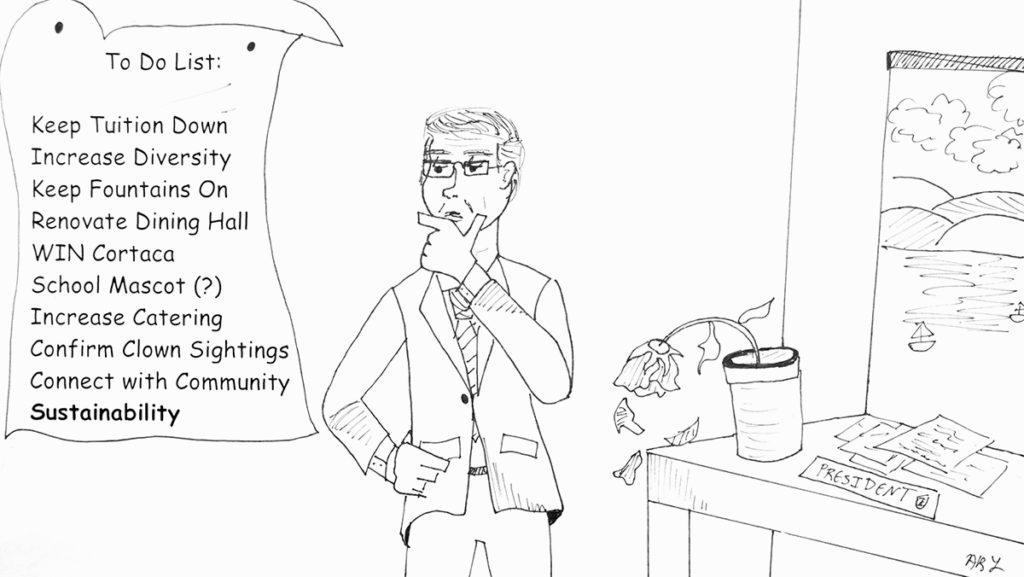Sustainability used to be a hallmark of Ithaca College. It was heralded as one of the college’s strengths and received hearty support from the administration during Peggy Ryan Williams’ tenure as president.
But now, sustainability at the college has fallen by the wayside. Through a lack of institutional support, primarily at the hands of President Tom Rochon, sustainability initiatives have weakened over the past several years, with the issue toppling down the list of the administration’s priorities.
The deterioration of sustainability — which does not have an updated page on Ithaca College’s website — is partly due to structural changes that have weakened the influence of the Office of Sustainability at the college. Having sustainability positions report to the Office of Facilities, instead of the Office of the Provost, moved the issue out of direct administrative purview and separated it from the academic side of the college, leading to a disconnect and less interaction between the administration and students and sustainability efforts.
Furthermore, sustainability positions have turned into a revolving door, with several people filling administrative provost positions and high-level sustainability positions leaving after a few years. With no consistent leadership overseeing sustainability, many initiatives end up deteriorating or losing strength after a few years, such as the Climate Action Plan. What was supposed to be an efficient way for the college to reevaluate its progress on sustainability faded into nonexistence after three years, and since then, the college has had no way of analyzing its various sustainability initiatives. In fact, a report from The Ithacan in March 2016 showed that the college is actually behind on its renewable energy usage, a failure that could be attributed to the decline of a sustainability focus at the college.
Sustainability efforts also suffered from a lack of funding from the college. The grants that the college received as sustainability initiatives prior to 2012 allowed these programs to flourish, reach their full potential and make a beneficial impact. But when external funds ran dry in 2012, so did sustainability.
Though provosts have come and gone, the common denominator during the period of deterioration of sustainability initiatives, is Rochon. As president of the college, he establishes the agenda — he determines which issues are prioritized and which are not. With sustainability being a forlorn symbol of what was once great about the college, it is now clear that its failure, among many others, is a telltale sign of an administration that has lost sight of the college’s best qualities and a president who has squandered a major piece of the college’s former identity.














